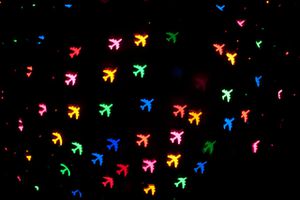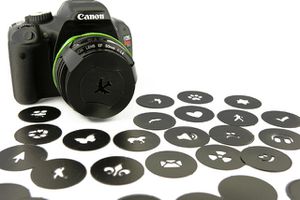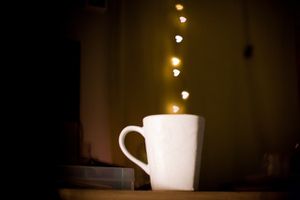
Specifically, there is people searching for specific blurred lights, for example with pentagon shape. As I commented, this is produced by the number of blades in the lens' diaphragm (in that case, five), but there are ways to trick this situation. Best thing, this process is more effective in non-professional DSLR lenses.
Amateur and semi-pro cameras use smaller sensors, compared with the35mm film reference, so that only the inner areas of the lens are used (this is the origin of the multiplication factor...). However, the bokeh effect in non-focused lights is produced by the outer contour allowed by the diaphragm opening, which defined the shape.

What if we use some object to change that shape? Of course, we will not work inside the camera, we would surely damage it. Easiest way is to place something before the lens, which produces the new, desired shape. At the same time, the object should not cast any shadow on the image, so we cannot cover the lens completely...
Do it yourself: take a piece of black cardboard, and cut the desired shape out. As a rule of thumb, opening should be in the same size range as your sensor (say, 1.5 by 2cm). Remember to use low aperture values (open diaphragm), maybe f5.6 or less, to blur objects in the background. Apart from this, you have full design freedom.
Being out of focus, the shape will appear blurred. If aperture is big enough, no shapes should be observed in the pictures (maybe, a slight vignetting), but you will get lights in the desired shape...

If you do not like to work hard, you lack imagination (hmmm), you are not into crafts or you have some spare budget, you may also check webs like Photojojo.com, where you will find a kit with 20+ ready-made shapes to produce creative bokeh... there is no excuse anymore. The pictures used here come from the Photojojo product.
Originally posted on Feb 31st 2012 (Over-Blog)


No hay comentarios:
Publicar un comentario